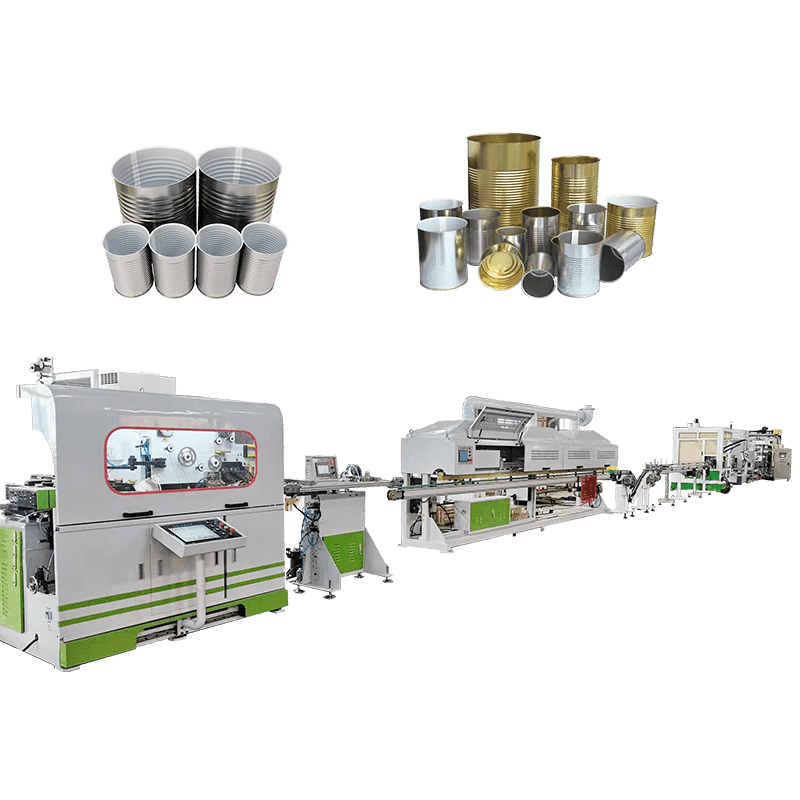In the metal packaging industry, the stamping process of Metal Lid/Bottom Production Line is an important link, which determines the shape, size and precision of the product. This process combines precise mechanical operation with efficient automatic control, showing the exquisite craftsmanship of modern manufacturing.
Stamping is the process of applying pressure to the metal sheet through the die to make it plastically deformed to obtain the required shape and size. In the Metal Lid/Bottom Production Line, this step usually occurs at the front end of the production line and is the basis for subsequent processing.
The key to stamping lies in the design of the die. The design of the die needs to be accurately calculated according to the specific requirements of the product to ensure that every detail meets the product specifications. The die usually consists of two parts, the upper die is fixed on the slide of the punching machine, and the lower die is installed on the workbench. When the slide descends, the upper die and the lower die close, applying pressure to the metal sheet placed therein, so that it is deformed into the desired shape.
After the stamping process begins, the metal sheet is fed into the working area of the punching machine and accurately positioned between the dies. As the punching machine starts, the slider drops rapidly, driving the upper die to move downward. Under tremendous pressure, the metal sheet begins to deform plastically and gradually fits the shape of the die. In this process, the fluidity and toughness of the metal material are fully utilized, ensuring the accuracy and quality of the formed product.
In order to improve production efficiency and ensure product quality, the stamping process of the Metal Lid/Bottom Production Line usually adopts automated control. Through preset programs and sensors, the production line can automatically complete a series of operations such as feeding, positioning, stamping and discharging of metal sheets. This automated control not only reduces manual intervention and labor intensity, but also greatly improves production efficiency and product consistency.
After stamping, the metal cover or bottom needs to undergo a series of subsequent treatments, such as deburring, cleaning, polishing, etc., to further improve the appearance quality and performance of the product. These subsequent treatment processes also use automated equipment and precision processes to ensure that every product can meet customer expectations and requirements.

 English
English عربى
عربى русский
русский




